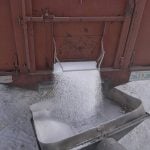Ron Lofthouse remembers it as the call that rocked his honey house. It was 2003, and the man at the other end said he was from Loblaws. At first Lofthouse assumed it was a call from the nearby No-Frill’s Loblaw store that was already carrying Buckhorn Honey, the brand that Lofthouse had launched part-time while holding down a full-time job selling flooring.
Then Lofthouse realized that the call was coming straight from Loblaws head office in Toronto.
Lofthouse had learned the honey-making business from an uncle as a teenager, and over the years had grown the business at a very slow pace. By the time he retired from his off-farm job, Lofthouse managed up to about 80 hives and supplied five stores near Peterborough, Ont.
Read Also

A new spin on farm legacy
What does farm legacy look like for the next generation.
One of his top local retailers had told Loblaws warehouse buyers that Lofthouse was looking for more shelf space and had some honey. “He offered to send us a list of stores to see what we could do,” Lofthouse says, then pauses for effect. “They have over 1,000 stores.”
When a retailer puts product on the store’s shelves, it’s called being “listed.” Larger grocery wholesalers sell to a network of stores and individual store buyers make their purchases from a central product list of available items. In most cases, store operators within a chain purchase at least 60 per cent of the products they carry from their wholesaler’s pre-approved lists.
After a night of staring at the list in disbelief, Lofthouse decided to take on the opportunity by trying to supply a portion of the stores and outsource honey. Today Buckhorn Honey is in 200 Loblaw stores across Ontario, along with several Metro stores, and Buckhorn is selling over 100,000 pounds of honey each year.
One of those stores, the Your Independent Grocer store in Beaverton, an hour west of Lofthouse’s plant, is owned by Russell Fisher. Fisher is as local as you can get. Raised on a beef farm on the outskirts of town, he had worked in the local store as a teenager and by his second year studying agricultural business at the University of Guelph, he had decided he wanted to work in the grocery business.
“Just like my classmates who wanted to go home to the farm business, I felt I could succeed and move through the corporate side or ownership of the grocery business,” Lofthouse says. So after graduating, he worked for Loblaws stores in Toronto and eventually bought the franchise in his hometown.
Fisher has a handful of local products currently on his shelf and in the summer, five to 10 per cent of his volume is local produce and other foods. In the winter, though, most local products come through Loblaw warehouses, like Buckhorn Honey.
Fisher and Lofthouse agree that it takes the right personality, pricing and products to make it onto store shelves … and often it’s just about timing and trends.
#1: TARGET INDEPENDENT RETAILERS
Ron Lofthouse initially set his sights on smaller, independent stores operating outside of a chain, thinking they have more discretion to buy from a variety of suppliers.
Not only was it a good way to get started, it also proved a good growth strategy. Lofthouse’s track record of product quality and service with these stores appealed to larger retailers and was a big help in getting into Loblaws.
Most provincial agriculture ministries maintain a list of suggested retailers for farmers to approach. Such retailers include specialty food stores, independent and chain grocery stores, delicatessens, bed and breakfast establishments, kitchen and cookware stores, retail shops, gift shops, gift basket businesses and buyers’ clubs.
About half of Canada’s $60 billion in retail food sales are rung up by large supermarket chains. The top supermarket chains in Canada by sales are Loblaw, Sobeys (Empire), Canada Safeway and Metro (formerly A&P), plus Wal-Mart and Costco.
Generally, new product buying decisions are made at the retail company’s headquarters, not at the store level. Estimates are that food retailers are being presented 20,000 to 30,000 new products each year in the U. S.
Loblaws is flexible with its Your Independent Grocer franchise stores, so Beaverton owner Russell Fisher makes the decisions on what products to put on his shelves. Fisher wants to stock as many local products as he can but says sometimes they’re difficult to source consistently.
Loblaws’ warehouse listing program is called the Elvis system. Once you’re inside it, you can go virtually anywhere in the country. “You can go from coast to coast to coast and you can find a Loblaws or an affiliate and they are able to purchase Buckhorn Honey,” says Lofthouse.
Often to make room for new products, another product will need to be bumped off the shelf or given less space. A 2000 study by Information Resources, Inc. (IRI) found that more than half of new products fail, particularly in food categories.
Lofthouse knows that retailers can be fickle, even with a standard product like honey. Instead of having a goal to be in all Loblaws stores, he decided to pursue other large grocery store chains.
Two summers ago, Lofthouse got another unexpected call, this time from A&P (now named Metro) asking if he wanted to be on their listing. His honey’s reputation, the increasing demand for local products and Lofthouse’s ability to fill orders had once again opened doors.
Some large chain stores charge food manufacturers listing fees or slotting allowances for new product shelf space. The U. S. Federal Trade Commission estimates $9 billion a year is spent on listing fees, or “slotting fees” as they are called south of the border. Fees ranged from a few hundred dollars to $25,000 per item per store.
These listing fees cover the costs of rearranging shelves and warehouse, plus the administration costs associated with adding a new product. However, many retailers waive such allowances for minority-owned vendors because of their increasing value in markets with high levels of diversity, and also for local growers and suppliers.
#2: FOCUS ON A NICHE MARKET
Be distinctive, Lofthouse recommends. Create a product in a category that allows you a chance to build brand awareness, both among store managers and among consumers.
Buckhorn Honey is named after the small community just up the winding road from Lofthouse’s operation. The combination of name and logo instantly differentiates him from the competition.
Also choose a product you can sell. After a lifetime in sales, Lofthouse says a benefit of building his business on honey is that honey isn’t a difficult sell, especially local honey. “It’s a commodity and when I go into a store and say it’s from Buckhorn and it’s approved, they want it.”
It’s also important to build ties that consumers will respond to. Lofthouse is in negotiations with two good-sized stores right now and is planning to expand his honey house to double production. “The grocers are continually looking for more Canadian product,” Lofthouse says. “We want to be able to hold that.”
Now in its third year, Loblaws’ “Grown Close to Home” program in September offers up to 40 per cent fresh produce from Canada during peak season. “Having local sweet corn is a perception driver,” says Fisher. “It brings people into the store.”
Fisher’s store has over 40,000 stock keeping units (SKUs) and certain categories make more money than others. Although some products don’t make as many sales as others Fisher may keep them on shelf to maintain a local, environmentally friendly reputation.
“I’m not too crazy about how a local line of organic soap products is selling but
#2: FOCUS ON A NICHE MARKET
Be distinctive, Lofthouse recommends. Create a product in a category that allows you a chance to build brand awareness, both among store managers and among consumers.
Buckhorn Honey is named after the small community just up the winding road from Lofthouse’s operation. The combination of name and logo instantly differentiates him from the competition.
Also choose a product you can sell. After a lifetime in sales, Lofthouse says a benefit of building his business on honey is that honey isn’t a difficult sell, especially local honey. “It’s a commodity and when I go into a store and say it’s from Buckhorn and it’s approved, they want it.”
It’s also important to build ties that consumers will respond to. Lofthouse is in negotiations with two good-sized stores right now and is planning to expand his honey house to double production. “The grocers are continually looking for more Canadian product,” Lofthouse says. “We want to be able to hold that.”
Now in its third year, Loblaws’ “Grown Close to Home” program in September offers up to 40 per cent fresh produce from Canada during peak season. “Having local sweet corn is a perception driver,” says Fisher. “It brings people into the store.”
Fisher’s store has over 40,000 stock keeping units (SKUs) and certain categories make more money than others. Although some products don’t make as many sales as others Fisher may keep them on shelf to maintain a local, environmentally friendly reputation.
“I’m not too crazy about how a local line of organic soap products is selling but
I like the presentation,” Fisher says. “Sometimes it depends on high movement, but with other products it’s not as important.”
#3: OUTSOURCE FOR EFFICIENCY
By selling into the niche local market, Lofthouse hopes to avoid price wars, food safety and quality issues. For now the issue is just keeping up with demand.
“I looked at the store list and agreed to be inducted into a vendor profile,” says Lofthouse. “But I knew the 40, 50 or 60 pounds of honey per hive wasn’t going to cut it so we scrambled.”
To meet the massive sudden increase in demand, Lofthouse had to shift his business from being a producer who sold locally to wholesale buyer, packager and distribution manager. Now he outsources all his honey production, then pasteurizes it, creams some, jars it and puts on his own Buckhorn Honey label. He buys from five farmers in Ontario who manage over 1,000 hives.
“The beekeepers have to accept the terms that grocers provide,” Lofthouse says. For example, at the start of the recession the terms changed instead of being paid in 15 days, Loblaw asked for 60-day terms. For farmers, this was an additional cash-flow problem to manage and not a cost Lofthouse could absorb.
The provincial apiarist, Doug McQuarrie, helped Lofthouse quickly source beekeepers. He says that in Canada the alfalfa and clover acres are decreasing and canola produces honey that granulates more easily which isn’t suitable for liquid honey.
He explains that liquid honey is demanded by eastern Canadian consum-
I like the presentation,” Fisher says. “Sometimes it depends on high movement, but with other products it’s not as important.”
#3: OUTSOURCE FOR EFFICIENCY
By selling into the niche local market, Lofthouse hopes to avoid price wars, food safety and quality issues. For now the issue is just keeping up with demand.
“I looked at the store list and agreed to be inducted into a vendor profile,” says Lofthouse. “But I knew the 40, 50 or 60 pounds of honey per hive wasn’t going to cut it so we scrambled.”
To meet the massive sudden increase in demand, Lofthouse had to shift his business from being a producer who sold locally to wholesale buyer, packager and distribution manager. Now he outsources all his honey production, then pasteurizes it, creams some, jars it and puts on his own Buckhorn Honey label. He buys from five farmers in Ontario who manage over 1,000 hives.
“The beekeepers have to accept the terms that grocers provide,” Lofthouse says. For example, at the start of the recession the terms changed instead of being paid in 15 days, Loblaw asked for 60-day terms. For farmers, this was an additional cash-flow problem to manage and not a cost Lofthouse could absorb.
The provincial apiarist, Doug McQuarrie, helped Lofthouse quickly source beekeepers. He says that in Canada the alfalfa and clover acres are decreasing and canola produces honey that granulates more easily which isn’t suitable for liquid honey.
He explains that liquid honey is demanded by eastern Canadian consum-
ers whereas in Western Canada creamed or granulated honey is accepted.” In Ontario the market is 95 per cent liquid.”
Selling outside of Ontario makes freight costs prohibitive, says Lofthouse.
In a ramshackle honey house Lofthouse receives and stores barrels of honey. You can see the bear scratches on the wooden doors. The honey is then gravity fed to a few stainless steel vats below for pasteurizing. From those warming vats, the honey is manually jarred, then labelled and put into cartons by five part-time staff.
“I’ve looked at automatic systems and it just doesn’t pay back at our size,” says Lofthouse. “We try to keep it as simple as possible.”
#4: GET YOUR PRICES RIGHT
Prior to being listed, Lofthouse hired a person to do price checking at grocery stores in Peterborough — including retail outlets where they weren’t on the shelves. She emailed him the average price and he then set his prices to be competitive. Honey prices vary about 10 per cent, up to 10 cents per kilogram, depending on supply.
“Honey’s generally not a big ticket item,” Lofthouse says. “Now I just check the pricing against our warehouse pricing.”
Lofthouse also reads the American Bee Journal to get market prices and information. Imported honey from South America or China sells for about a tenth of price of North American. He says retailers are selling imported honey for the same price as local and are reaping huge profits.
Fisher says local production is not a license to print premiums. “There has to be a cost advantage,” says Fisher. “Local products don’t demand a premium.”
At his store, seven or eight times out of 10 the local products hit the market cost-wise. Usually locally produced food has lower transportation costs, and Fisher passes those savings on to his customers
Grocers don’t price each item based on a proportional markup over unit cost. Instead, they price each of their products as part of a strategic whole, taking into account opportunities for price discrimination across products, and service and price offered by competitors. Margins vary depending on the product, drawing potential, labour, shrink, supply costs like packaging, and fixed costs like electricity to run refrigeration units.
At Fisher’s store the produce is checked over and trimmed three times a day. Shrink accounts for 10 to 12 per cent of price. Shrink includes waste, and labour involved.
“We’re part of the food safety chain, says Fisher. “From the trucks onto the shelves is my responsibility to keep the food chilled properly.”
#5: GET FACE-TO-FACE WITH THE STORE
This spring, Lofthouse was planning to visit stores in northern Ontario on a road tour of grocery stores in places like Elliot Lake and Sudbury.
Lofthouse feels going to stores is absolutely necessary. He checks the shelves to get orders, meets the person responsible for his products and makes sure he keeps channels open for communication. “It keeps you in the good books,” Lofthouse says “It’s more effective than big advertising budgets.”
Fisher agrees that visiting the store and talking directly to the manager is key in getting shelf space for local produce, although it might mean many visits. “I go mostly by instincts,” says Fisher. “Often it’s about persistence and timing the market correctly.”
“I look at it like this: Loblaws is giving you the privilege of thousands of customers seeing your product,” says Fisher. The supermarkets have the upper-hand position and you have to give good service and try to meet their managers’ needs.
Lofthouse’s kids developed a website (but he doesn’t get many sales through that medium. “I’ve sold all my life,” he says. “You can sell by phone, you can sell by written media or by T.V., but my most successful selling has been face-to-face.”
The trick is to meet demand with correct supply. That takes communication. “We’re not a pallet business, we’re a pre-order, five-to-10-cases-per-store-per-week business,” says Lofthouse.
Many years ago a friend drew the little bee-like creature logo that doesn’t look unlike Lofthouse. Some would describe it as sort of cuddly and Lofthouse is extremely approachable and obviously kind.
#6: SHOW THEM THE NUMBERS
Fisher is currently working with a local supplier of campfire wood trying to make a deal. At first, the woman called, but Fisher said no. Then she stopped in to the store with a basic single sheet of black and white numbers. “Show me some sales figures,” says Fisher. “Raw data is fine.”
Fisher liked that she had made the effort to visit the store and talk to him face-to-face. In his experience this shows that she’ll give good service, including managing the product (in this case slugging wood). So he reviewed this typewritten effort and is now trying to work out a deal.
For food, Fisher recommends using in-store demonstrations to promote and guage consumer reaction. “Without question, I love demonstrations,” says Fisher. “But I have to staff it too for food safety considerations.” To compete against Costco, Loblaws encourages in-store demonstrations and sampling.
However, if you’re to go national, you need more marketing information and planning. “You need big bucks to go national,” says Fisher. “It’s sort of like The Dragon’s Den.” You’ll need strong sales figures, a large enough production and logistical capacity and a strong marketing plan with measurable and feasible goals.
“Plus you have to be able to service the heck out of the stores,” says Fisher. “If you’re not able to produce and maintain the supply, that’s a deal breaker.”
In addition to basic product/vendor information, buyers expect details about consumer preferences, shelf space, distribution allowances, test market results, advertising and consumer promotional support. Product information including
ers whereas in Western Canada creamed or granulated honey is accepted.” In Ontario the market is 95 per cent liquid.”
Selling outside of Ontario makes freight costs prohibitive, says Lofthouse.
In a ramshackle honey house Lofthouse receives and stores barrels of honey. You can see the bear scratches on the wooden doors. The honey is then gravity fed to a few stainless steel vats below for pasteurizing. From those warming vats, the honey is manually jarred, then labelled and put into cartons by five part-time staff.
“I’ve looked at automatic systems and it just doesn’t pay back at our size,” says Lofthouse. “We try to keep it as simple as possible.”
#4: GET YOUR PRICES RIGHT
Prior to being listed, Lofthouse hired a person to do price checking at grocery stores in Peterborough — including retail outlets where they weren’t on the shelves. She emailed him the average price and he then set his prices to be competitive. Honey prices vary about 10 per cent, up to 10 cents per kilogram, depending on supply.
“Honey’s generally not a big ticket item,” Lofthouse says. “Now I just check the pricing against our warehouse pricing.”
Lofthouse also reads the American Bee Journal to get market prices and information. Imported honey from South America or China sells for about a tenth of price of North American. He says retailers are selling imported honey for the same price as local and are reaping huge profits.
Fisher says local production is not a license to print premiums. “There has to be a cost advantage,” says Fisher. “Local products don’t demand a premium.”
At his store, seven or eight times out of 10 the local products hit the market cost-wise. Usually locally produced food has lower transportation costs, and Fisher passes those savings on to his customers
Grocers don’t price each item based on a proportional markup over unit cost. Instead, they price each of their products as part of a strategic whole, taking into account opportunities for price discrimination across products, and service and price offered by competitors. Margins vary depending on the product, drawing potential, labour, shrink, supply costs like packaging, and fixed costs like electricity to run refrigeration units.
At Fisher’s store the produce is checked over and trimmed three times a day. Shrink accounts for 10 to 12 per cent of price. Shrink includes waste, and labour involved.
“We’re part of the food safety chain, says Fisher. “From the trucks onto the shelves is my responsibility to keep the food chilled properly.”
#5: GET FACE-TO-FACE WITH THE STORE
This spring, Lofthouse was planning to visit stores in northern Ontario on a road tour of grocery stores in places like Elliot Lake and Sudbury.
Lofthouse feels going to stores is absolutely necessary. He checks the shelves to get orders, meets the person responsible for his products and makes sure he keeps channels open for communication. “It keeps you in the good books,” Lofthouse says “It’s more effective than big advertising budgets.”
Fisher agrees that visiting the store and talking directly to the manager is key in getting shelf space for local produce, although it might mean many visits. “I go mostly by instincts,” says Fisher. “Often it’s about persistence and timing the market correctly.”
“I look at it like this: Loblaws is giving you the privilege of thousands of customers seeing your product,” says Fisher. The supermarkets have the upper-hand position and you have to give good service and try to meet their managers’ needs.
Lofthouse’s kids developed a website (but he doesn’t get many sales through that medium. “I’ve sold all my life,” he says. “You can sell by phone, you can sell by written media or by T.V., but my most successful selling has been face-to-face.”
The trick is to meet demand with correct supply. That takes communication. “We’re not a pallet business, we’re a pre-order, five-to-10-cases-per-store-per-week business,” says Lofthouse.
Many years ago a friend drew the little bee-like creature logo that doesn’t look unlike Lofthouse. Some would describe it as sort of cuddly and Lofthouse is extremely approachable and obviously kind.
#6: SHOW THEM THE NUMBERS
Fisher is currently working with a local supplier of campfire wood trying to make a deal. At first, the woman called, but Fisher said no. Then she stopped in to the store with a basic single sheet of black and white numbers. “Show me some sales figures,” says Fisher. “Raw data is fine.”
Fisher liked that she had made the effort to visit the store and talk to him face-to-face. In his experience this shows that she’ll give good service, including managing the product (in this case slugging wood). So he reviewed this typewritten effort and is now trying to work out a deal.
For food, Fisher recommends using in-store demonstrations to promote and guage consumer reaction. “Without question, I love demonstrations,” says Fisher. “But I have to staff it too for food safety considerations.” To compete against Costco, Loblaws encourages in-store demonstrations and sampling.
However, if you’re to go national, you need more marketing information and planning. “You need big bucks to go national,” says Fisher. “It’s sort of like The Dragon’s Den.” You’ll need strong sales figures, a large enough production and logistical capacity and a strong marketing plan with measurable and feasible goals.
“Plus you have to be able to service the heck out of the stores,” says Fisher. “If you’re not able to produce and maintain the supply, that’s a deal breaker.”
In addition to basic product/vendor information, buyers expect details about consumer preferences, shelf space, distribution allowances, test market results, advertising and consumer promotional support. Product information including
ers whereas in Western Canada creamed or granulated honey is accepted.” In Ontario the market is 95 per cent liquid.”
Selling outside of Ontario makes freight costs prohibitive, says Lofthouse.
In a ramshackle honey house Lofthouse receives and stores barrels of honey. You can see the bear scratches on the wooden doors. The honey is then gravity fed to a few stainless steel vats below for pasteurizing. From those warming vats, the honey is manually jarred, then labelled and put into cartons by five part-time staff.
“I’ve looked at automatic systems and it just doesn’t pay back at our size,” says Lofthouse. “We try to keep it as simple as possible.”
#4: GET YOUR PRICES RIGHT
Prior to being listed, Lofthouse hired a person to do price checking at grocery stores in Peterborough — including retail outlets where they weren’t on the shelves. She emailed him the average price and he then set his prices to be competitive. Honey prices vary about 10 per cent, up to 10 cents per kilogram, depending on supply.
“Honey’s generally not a big ticket item,” Lofthouse says. “Now I just check the pricing against our warehouse pricing.”
Lofthouse also reads the American Bee Journal to get market prices and information. Imported honey from South America or China sells for about a tenth of price of North American. He says retailers are selling imported honey for the same price as local and are reaping huge profits.
Fisher says local production is not a license to print premiums. “There has to be a cost advantage,” says Fisher. “Local products don’t demand a premium.”
At his store, seven or eight times out of 10 the local products hit the market cost-wise. Usually locally produced food has lower transportation costs, and Fisher passes those savings on to his customers
Grocers don’t price each item based on a proportional markup over unit cost. Instead, they price each of their products as part of a strategic whole, taking into account opportunities for price discrimination across products, and service and price offered by competitors. Margins vary depending on the product, drawing potential, labour, shrink, supply costs like packaging, and fixed costs like electricity to run refrigeration units.
At Fisher’s store the produce is checked over and trimmed three times a day. Shrink accounts for 10 to 12 per cent of price. Shrink includes waste, and labour involved.
“We’re part of the food safety chain, says Fisher. “From the trucks onto the shelves is my responsibility to keep the food chilled properly.”
#5: GET FACE-TO-FACE WITH THE STORE
This spring, Lofthouse was planning to visit stores in northern Ontario on a road tour of grocery stores in places like Elliot Lake and Sudbury.
Lofthouse feels going to stores is absolutely necessary. He checks the shelves to get orders, meets the person responsible for his products and makes sure he keeps channels open for communication. “It keeps you in the good books,” Lofthouse says “It’s more effective than big advertising budgets.”
Fisher agrees that visiting the store and talking directly to the manager is key in getting shelf space for local produce, although it might mean many visits. “I go mostly by instincts,” says Fisher. “Often it’s about persistence and timing the market correctly.”
“I look at it like this: Loblaws is giving you the privilege of thousands of customers seeing your product,” says Fisher. The supermarkets have the upper-hand position and you have to give good service and try to meet their managers’ needs.
Lofthouse’s kids developed a website (but he doesn’t get many sales through that medium. “I’ve sold all my life,” he says. “You can sell by phone, you can sell by written media or by T.V., but my most successful selling has been face-to-face.”
The trick is to meet demand with correct supply. That takes communication. “We’re not a pallet business, we’re a pre-order, five-to-10-cases-per-store-per-week business,” says Lofthouse.
Many years ago a friend drew the little bee-like creature logo that doesn’t look unlike Lofthouse. Some would describe it as sort of cuddly and Lofthouse is extremely approachable and obviously kind.
#6: SHOW THEM THE NUMBERS
Fisher is currently working with a local supplier of campfire wood trying to make a deal. At first, the woman called, but Fisher said no. Then she stopped in to the store with a basic single sheet of black and white numbers. “Show me some sales figures,” says Fisher. “Raw data is fine.”
Fisher liked that she had made the effort to visit the store and talk to him face-to-face. In his experience this shows that she’ll give good service, including managing the product (in this case slugging wood). So he reviewed this typewritten effort and is now trying to work out a deal.
For food, Fisher recommends using in-store demonstrations to promote and guage consumer reaction. “Without question, I love demonstrations,” says Fisher. “But I have to staff it too for food safety considerations.” To compete against Costco, Loblaws encourages in-store demonstrations and sampling.
However, if you’re to go national, you need more marketing information and planning. “You need big bucks to go national,” says Fisher. “It’s sort of like The Dragon’s Den.” You’ll need strong sales figures, a large enough production and logistical capacity and a strong marketing plan with measurable and feasible goals.
“Plus you have to be able to service the heck out of the stores,” says Fisher. “If you’re not able to produce and maintain the supply, that’s a deal breaker.”
In addition to basic product/vendor information, buyers expect details about consumer preferences, shelf space, distribution allowances, test market results, advertising and consumer promotional support. Product information including














